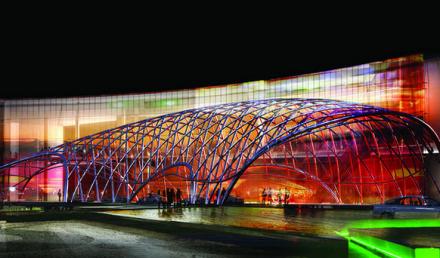It took a little bit of political maneuvering and a goodly sum of cash, but on November 4, 2013 New York voters approved Gov. Andrew Cuomo’s plan for up to 7 Las Vegas style casinos and a couple of slots parlors in the state. At the Governor’s insistence, the legislature wrote in a condition that the initial approvals include no more than 4 casinos, all in Upstate New York. Later plans call for a full scale casino in New York City.
Voters passed the measure by a 57-43 percent margin, setting off a year of frenzied planning and investment activity while mom and pop shops and casino industry heavyweights vied for recommendations from a casino locations committee. Although it would have been illegal for any of the parties to lobby the New York Gaming Facility Location Board directly, there were no such limitations on how casino interests could lobby local governments and communities in general.
Fully 20% of the decision weighting was factored toward “community support” and municipalities of under 25,000 population in the sparsely populated regions were not required to report lobbying efforts. In the time span of the voter referendum that initially authorized the casinos, the governor accepted about $1 million in contributions from casino interests and the lobbying group NY Jobs Now, comprised mostly of gambling interests, spent millions more promoting the initiative.
In the early summer of 2013 Cuomo had cause to believe the referendum would not pass voter muster – the tide was running against him. Opposition was firming up and alliances were being made. The most daunting obstacle was being raised by a consortium of 9 racino operators working under an umbrella organization called the New York Gaming Association. These nine operators all have video lottery terminal (VLT) parlors and were not looking forward to the competition.
With the push of a pen in early June of 2013, the governor simply wrote in a revision to his bill that would have allowed the Division of the Lottery to sign up new agents to run VLTs in the outer Boroughs of NYC and upstate if the referendum were to be defeated at the polls. The New York Gaming Association’s 9 member racinos would then be in a much worse position if the bill was defeated than they would be if it were passed. Needless to say the their vocal opposition to the plan was stifled.
Without a financially motivated central opposition to the proposal the loosely allied collateral coalitions fractured, and although there was grassroots and social media pressure to sway the vote, nothing coalesced to the point of a formative threat.
NY Jobs Now spent more than $4 million on the effort which included television advertising touting editorial opinions for the proposal, as well as a last minute robo-call campaign. The language of the referendum was also highly favorable to the proposal. The language was challenged but survived a court battle.
Regardless of the machinations and maneuverings, voters did indeed pass a constitutional amendment on November 4, 2013. And on December 17, 2014 the New York Gaming Facility Location Board made it’s recommendations for three Upstate casinos with Las Vegas style casino games. Each of the projects will bring construction and long term jobs to their areas as well as resort facilities.
Lago Resort & Casino will be located in Tyre and will face intense competition from the Oneida Indian Nation who were able to garner exclusive rights to build casinos in the 10 counties surrounding their Turning Stone Resort. They recently announced plans to open the Yellow Brick Road Casino in early 2015, in Chittenango, about 50 miles from Lagos.
Montreign Resort Casino Adelaar will be built in Thompson, about 90 miles from NYC. Rivers Casino & Resort at Mohawk Harbor will be built as part of a total revitalization of a derelict waterfront region in Schenectady after reclamation of the American Locomotive Company (ALCO) formerly occupying the site.


